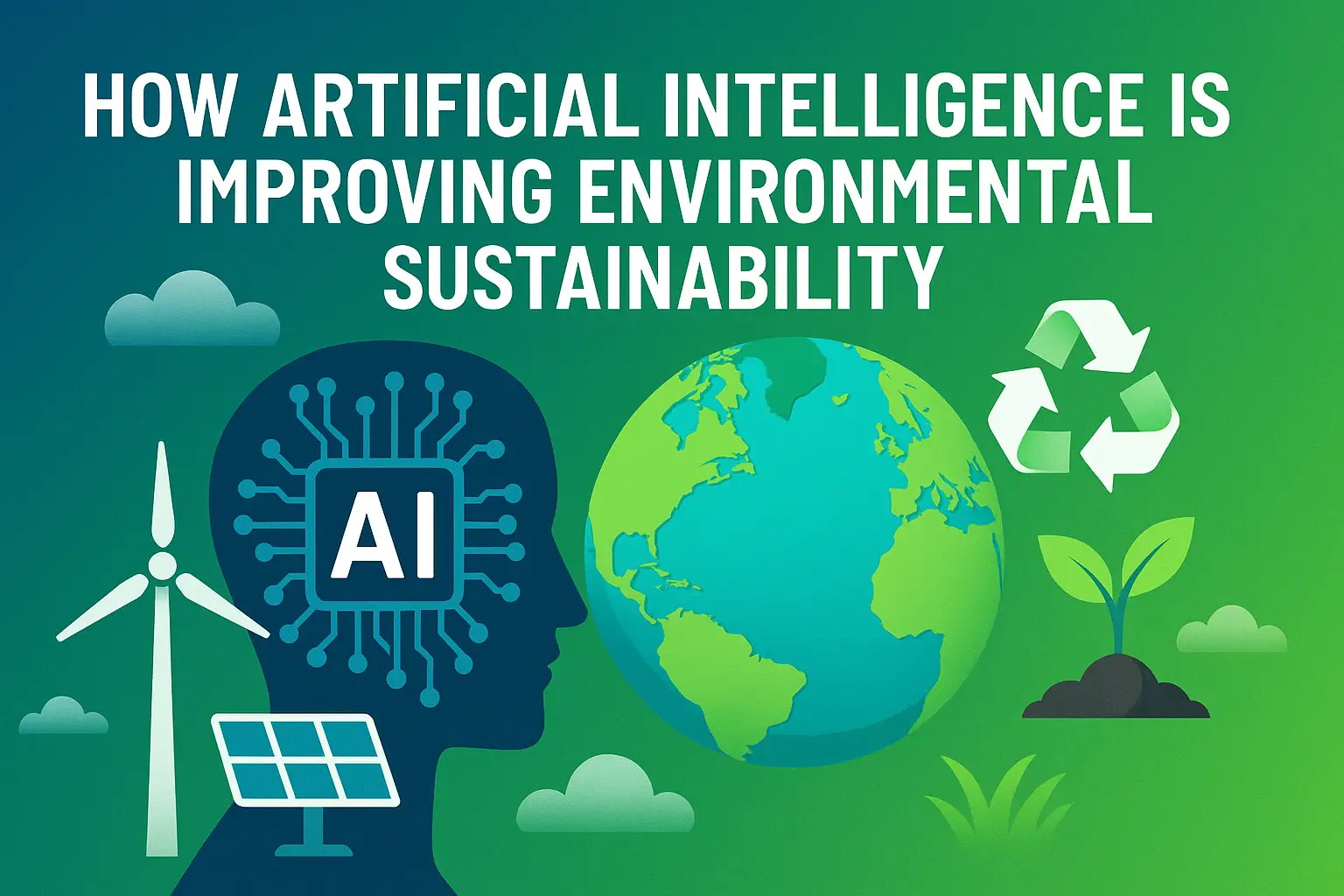Artificial Intelligence (AI) isn’t just transforming business and technology—it’s also becoming a powerful ally in the fight to protect our planet. From monitoring deforestation to optimizing energy consumption and supporting climate research, AI is playing a crucial role in promoting environmental sustainability.
In this article, we’ll explore how AI is helping build a greener, more sustainable future.
AI in Climate Change Monitoring
Understanding climate change requires processing vast amounts of data. AI excels at:
- Analyzing satellite imagery to track deforestation, melting glaciers, and land-use changes
- Modeling climate scenarios to predict temperature, precipitation, and sea-level trends
- Detecting greenhouse gas emissions in real time
Organizations like NASA, NOAA, and the European Space Agency rely on AI to enhance climate science and inform policy decisions.
AI in Wildlife Conservation
AI supports conservation efforts by:
- Identifying animal species from camera trap photos or audio recordings
- Tracking migration patterns and detecting poaching activity
- Predicting habitat loss to prioritize protection measures
Projects like PAWS (Protection Assistant for Wildlife Security) use AI to recommend patrol routes that maximize anti-poaching efforts.
AI in Energy Efficiency
Energy production and consumption are major contributors to greenhouse gas emissions. AI helps by:
- Optimizing energy grids for supply and demand balance
- Predicting equipment failures to prevent waste and downtime
- Adjusting heating, cooling, and lighting in real time for efficiency
- Integrating renewable energy sources like solar and wind into the grid
Smart buildings and smart cities rely on AI to lower their environmental footprint.
AI in Sustainable Agriculture
AI-powered agriculture improves sustainability through:
- Precision farming with drones and sensors to monitor soil health and crop growth
- Predictive analytics to optimize irrigation and fertilizer use
- Early detection of pests and diseases
- Yield forecasting to reduce waste and improve food security
Platforms like IBM Watson Decision Platform for Agriculture help farmers grow more with fewer resources.
AI and Circular Economy
AI enables circular economy strategies by:
- Identifying materials for recycling or reuse
- Optimizing supply chains to minimize waste
- Predicting product lifespan to plan maintenance and refurbishment
- Automating sorting in recycling facilities
This promotes resource efficiency and reduces environmental impact.
AI for Disaster Management
Climate-related disasters are becoming more frequent. AI supports resilience by:
- Predicting floods, hurricanes, and wildfires
- Mapping vulnerable areas for evacuation planning
- Coordinating emergency response logistics
- Assessing post-disaster damage
These capabilities save lives and speed recovery efforts.
Benefits of AI in Environmental Sustainability
1. Data-Driven Insights
AI uncovers patterns and trends that would be impossible to detect manually.
2. Real-Time Decision Making
Fast, automated analysis enables quicker responses to environmental threats.
3. Resource Optimization
AI helps use energy, water, and materials more efficiently.
4. Scalability
AI solutions can be deployed globally, impacting diverse ecosystems and communities.
5. Innovation
AI fosters new solutions to complex environmental challenges.
Challenges and Considerations
Despite its promise, AI for sustainability faces hurdles:
1. Data Quality and Availability
AI models need accurate, up-to-date data, which can be hard to obtain in some regions.
2. Energy Use of AI Systems
Training large AI models requires significant computing power and energy.
3. Ethical Use and Governance
AI tools must be developed transparently and equitably, avoiding unintended harm.
4. Cost and Accessibility
Deploying AI solutions can be expensive for smaller organizations or developing countries.
5. Dependence on Technology
Over-reliance on AI could reduce investment in traditional conservation skills and infrastructure.
Future Trends in AI and Sustainability
Looking ahead, AI will drive progress through:
- Carbon footprint tracking for individuals and organizations
- AI-assisted carbon capture technologies
- Biodiversity mapping with drone-based AI
- Decentralized renewable energy networks
- Global platforms for collaborative climate action
These advances will help build a sustainable, resilient world.
Final Thoughts: A Smarter Approach to Saving the Planet
Artificial Intelligence is proving to be an essential partner in environmental stewardship. When combined with human expertise, AI can help us better understand, protect, and restore our natural world.
As technology and awareness continue to grow, AI will play an even bigger role in creating a sustainable future—for people and the planet.
